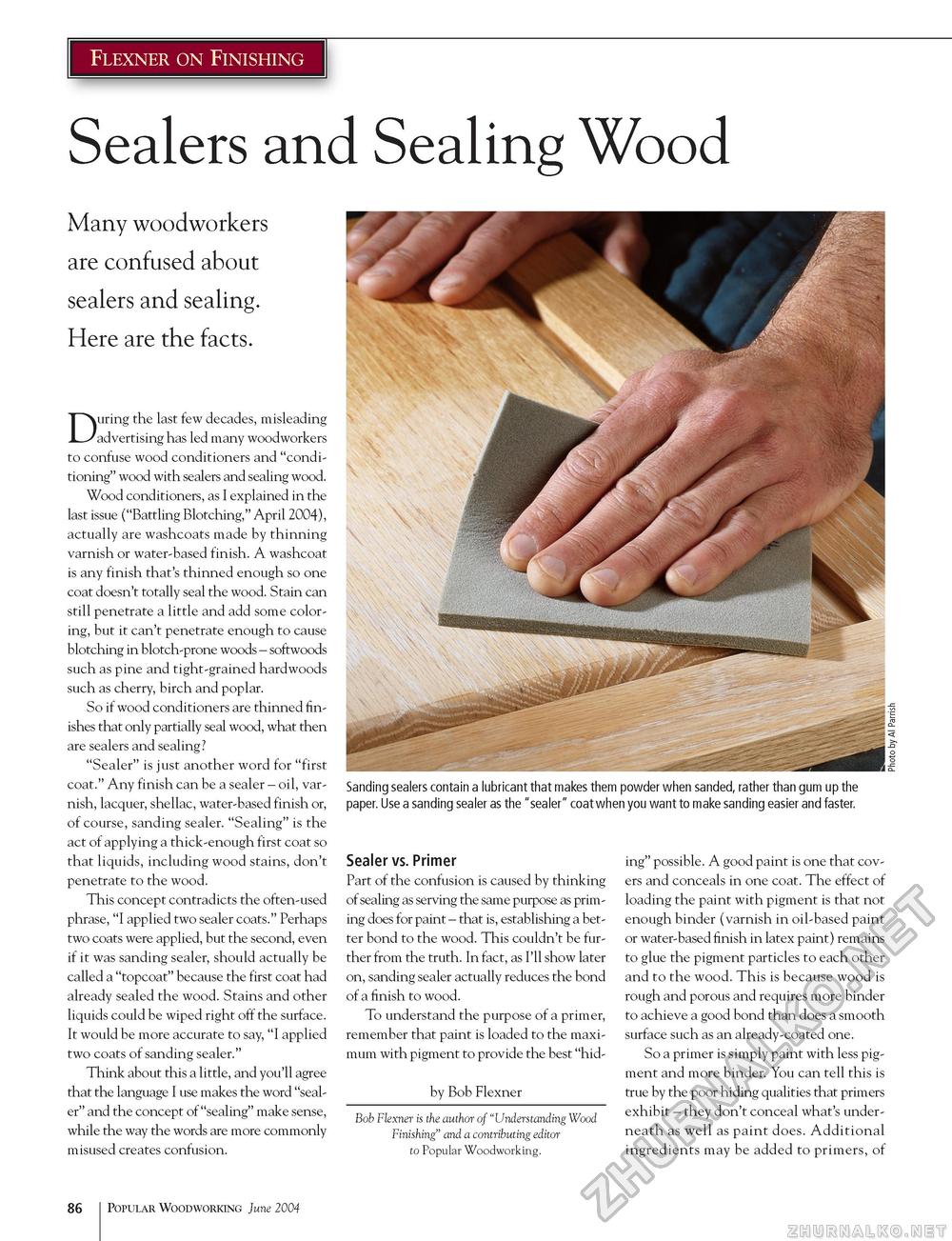Popular Woodworking 2004-06 № 141, страница 88
Flexner on Finishing Sealers and Sealing Wood Many woodworkers are confused about sealers and sealing. Here are the facts. During the last few decades, misleading advertising has led many woodworkers to confuse wood conditioners and "conditioning" wood with sealers and sealing wood. Wood conditioners, as I explained in the last issue ("Battling Blotching," April 2004), actually are washcoats made by thinning varnish or water-based finish. A washcoat is any finish that's thinned enough so one coat doesn't totally seal the wood. Stain can still penetrate a little and add some coloring, but it can't penetrate enough to cause blotching in blotch-prone woods - softwoods such as pine and tight-grained hardwoods such as cherry, birch and poplar. So if wood conditioners are thinned finishes that only partially seal wood, what then are sealers and sealing? "Sealer" is just another word for "first coat." Any finish can be a sealer - oil, varnish, lacquer, shellac, water-based finish or, of course, sanding sealer. "Sealing" is the act of applying a thick-enough first coat so that liquids, including wood stains, don't penetrate to the wood. This concept contradicts the often-used phrase, "I applied two sealer coats." Perhaps two coats were applied, but the second, even if it was sanding sealer, should actually be called a "topcoat" because the first coat had already sealed the wood. Stains and other liquids could be wiped right off the surface. It would be more accurate to say, "I applied two coats of sanding sealer." Think about this a little, and you'll agree that the language I use makes the word "sealer" and the concept of "sealing" make sense, while the way the words are more commonly misused creates confusion. Sanding sealers contain a lubricant that makes them powder when sanded, rather than gum up the paper. Use a sanding sealer as the "sealer" coat when you want to make sanding easier and faster. Sealer vs. Primer Part of the confusion is caused by thinking of sealing as serving the same purpose as priming does for paint - that is, establishing a better bond to the wood. This couldn't be further from the truth. In fact, as I'll show later on, sanding sealer actually reduces the bond of a finish to wood. To understand the purpose of a primer, remember that paint is loaded to the maximum with pigment to provide the best "hid- by Bob Flexner Bob Flexner is the author of "Understanding Wood Finishing" and a contributing editor to Popular Woodworking. ing" possible. A good paint is one that covers and conceals in one coat. The effect of loading the paint with pigment is that not enough binder (varnish in oil-based paint or water-based finish in latex paint) remains to glue the pigment particles to each other and to the wood. This is because wood is rough and porous and requires more binder to achieve a good bond than does a smooth surface such as an already-coated one. So a primer is simply paint with less pigment and more binder. You can tell this is true by the poor hiding qualities that primers exhibit - they don't conceal what's underneath as well as paint does. Additional ingredients may be added to primers, of 86 Popular Woodworking June 2004 |








